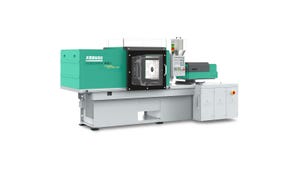Shape-shifting polymers and electronics take implantables in new directions
Researchers from the University of Texas at Dallas and the University of Tokyo have succeeded in placing electronics on implantable shape-memory polymers that soften and grip 3D objects such as tissues, nerves, and blood vessels when placed inside the body. Reportedly one of the first demonstrations of transistors that can change shape and maintain their electronic properties after implantation, the technology one day may result in new stimulative therapies.
May 15, 2014
Researchers from the University of Texas at Dallas and the University of Tokyo have succeeded in placing electronics on implantable shape-memory polymers that soften and grip 3D objects such as tissues, nerves, and blood vessels when placed inside the body. Reportedly one of the first demonstrations of transistors that can change shape and maintain their electronic properties after implantation, the technology one day may result in new stimulative therapies. The research was published online on Phys.org and will appear in a forthcoming print edition of Advanced Materials.
The "wrap-around" transistors are stiff at room temperature to facilitate their insertion in the patient but become soft and flexible once implanted. By wrapping themselves around internal organs, the electronics-laced polymer allows the body to behave exactly as it would without the device, explains a researcher to Phys.org.
Walter Voit, assistant professor of materials science and engineering and mechanical engineering and an author of the paper, says the new technique essentially involves laminating and curing the shape-memory polymers on top of the transistors. "In our device design, we are getting closer to the size and stiffness of precision biologic structures, but have a long way to go to match nature's amazing complexity, function, and organization," says Voit, who is also a member of the Texas Biomedical Device Center.
Shape-memory polymers developed by Voit reportedly are key enablers of this new technology.
The video shows the technology in action.
About the Author(s)
You May Also Like




